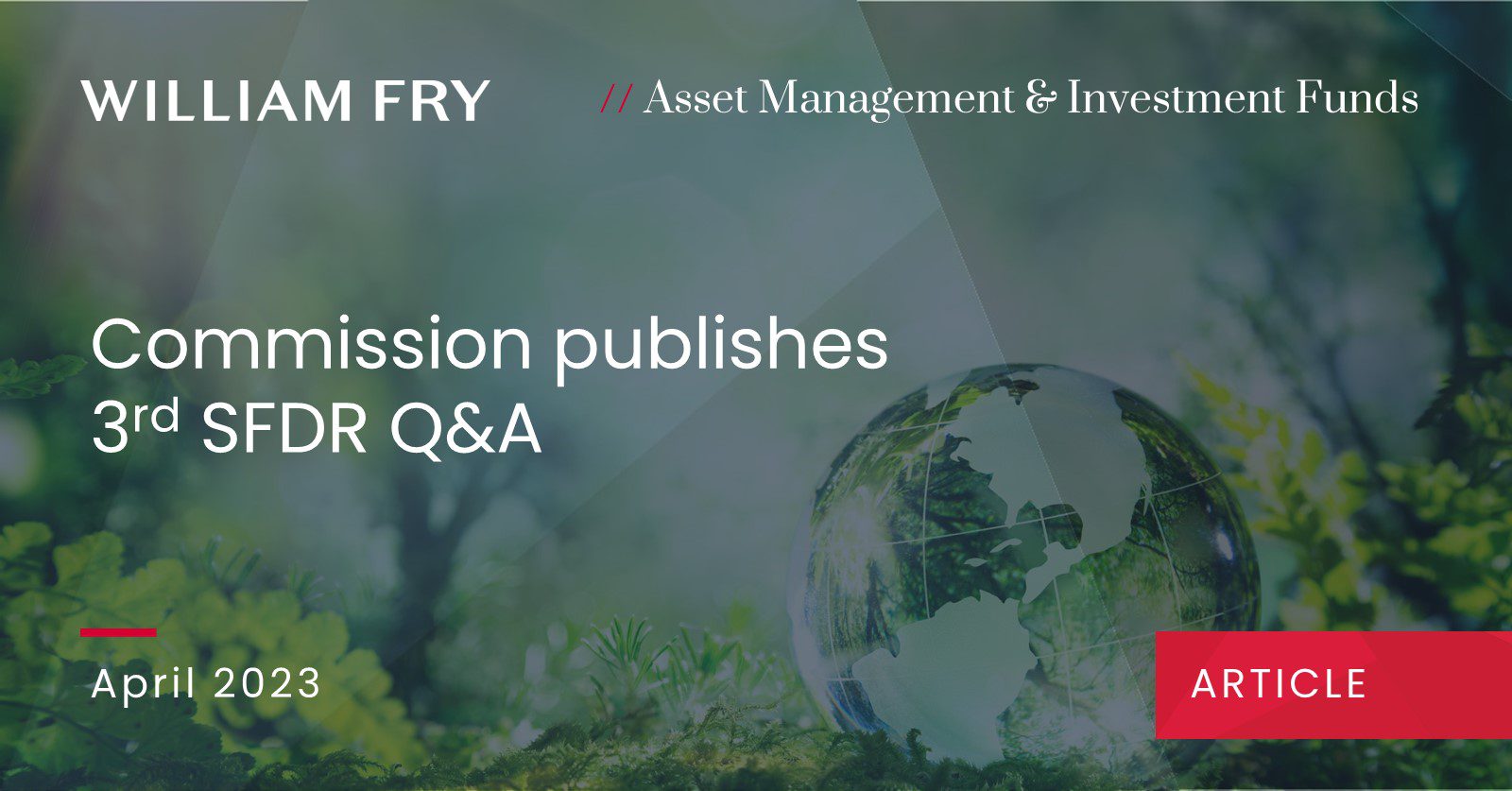On 5 April last, the Commission issued its third SFDR Q&A with responses to questions raised by the ESAs last September and revisions to certain previous Q&A which did not align with the positions now being set out in the latest Q&A, as summarised below.
- Article 9 funds with a carbon emission reduction objective are not required to track a PAB/CTB: the Commission’s first, July 2021 Q&A has been amended and reissued to remove guidance for Article 9 funds with a carbon emission reduction objective to track a Paris-aligned or Climate Transition Benchmark (PAB/CTB), which has been replaced by a clarification that SFDR does not prescribe any single methodology to account for sustainable investments.
- PAB/CTB trackers deemed to have a sustainable investment objective: in a new Q&A, the Commission clarifies that Article 9 funds with a carbon emission reduction objective have discretion as to the investment strategy used to achieve that objective and such funds, whether passively or actively managed, are subject to Article 9(3). However, where a fund seeks to achieve a carbon emission reduction objective by tracking a PAB/CTB, the fund will not be subject to Article 9(3)(2) disclosure as it is deemed to have a sustainable investment objective. Article 9(3)(2) requires a detailed explanation of how the continuous effort to achieve the fund’s objective is ensured in view of the Paris Agreement objectives. Only funds which do not passively track a PAB/CTB are subject to this disclosure rule and are therefore required to explain why the fund is considered to have a sustainable investment objective and also to make required Level 2 disclosures explaining the extent to which the fund complied with the methodological requirements for PAB/CTBs under the BMR. Notably, while the Q&A confirms that PAB/CTB trackers are deemed to have a sustainable investment objective, challenges may remain for such funds’ completion of SFDR Level 2 disclosure templates in circumstances where index providers are not subject to equivalent disclosure obligations.
- Fund managers are responsible for sustainable investment methodologies: despite detailed interpretative queries from the ESAs, the Q&A does not further specify the definition of sustainable investments under SFDR. Instead, the Commission confirms the responsibility of fund managers to develop their own methods for assessing sustainable investments, noting that SFDR does not prescribe any ‘minimum requirements’ for the contribution, do no significant harm, or good governance requirements for sustainable investments. The Commission also clarifies that, despite the reference to sustainable investments as investments in ‘economic activities’ under SFDR, it is possible to apply the sustainable investment test at the level of an investee company and not only at the level of its specific activities. This clarification issued in response to the ESAs’ question of how an investment in a company can be a sustainable investment where, for example, the company has one activity, among several other activities, that contributes to an environmental or social objective. This Q&A largely maintains the status quo with fund managers continuing to be responsible for constructing sustainable investment methodologies and absent any additional guidance from legislators/regulators.
- Article 8 funds can target carbon emissions reductions as an environmental characteristic: similar to the Article 9 clarifications, the Q&A confirms that SFDR does not limit the investment strategies available to funds in scope of Article 8. As a result, Article 8 funds’ environmental characteristics may target reduced carbon emissions, although the Commission notes that investor disclosures for such a fund should not mislead investors into thinking that the target equates to a sustainable investment objective for the fund.
- Product-level PAI consideration includes identification and mitigation: fund managers that comply with entity-level PAI consideration rules under SFDR Article 4 must disclose whether and, if so, how PAIs are considered for relevant underlying products. In response to the ESAs request for clarification of the term ‘consider’, the Commission confirms that product-level PAI disclosures must include both a description of the PAIs and the procedures in place to mitigate those impacts.
- Calculation of 500-employee threshold for mandatory entity-level PAI consideration rule: the Commission confirms that the term ’employee’ is not defined under SFDR and must therefore be determined by reference to the definition set out in applicable national law.
- Periodic product-level disclosures required only annually by investment firms: while periodic disclosures by investment firms for Article 8 or 9 products are required to be included in the quarterly client report issued under relevant MiFID rules, as SFDR only requires such disclosures to be made annually, they need only be included in every fourth client report issued under MiFID rules.
If you have any queries on the above or more generally on SFDR or the wider topic of ESG & Sustainability, please get in touch with the Asset Management & Investment Funds team or your usual William Fry contact.



